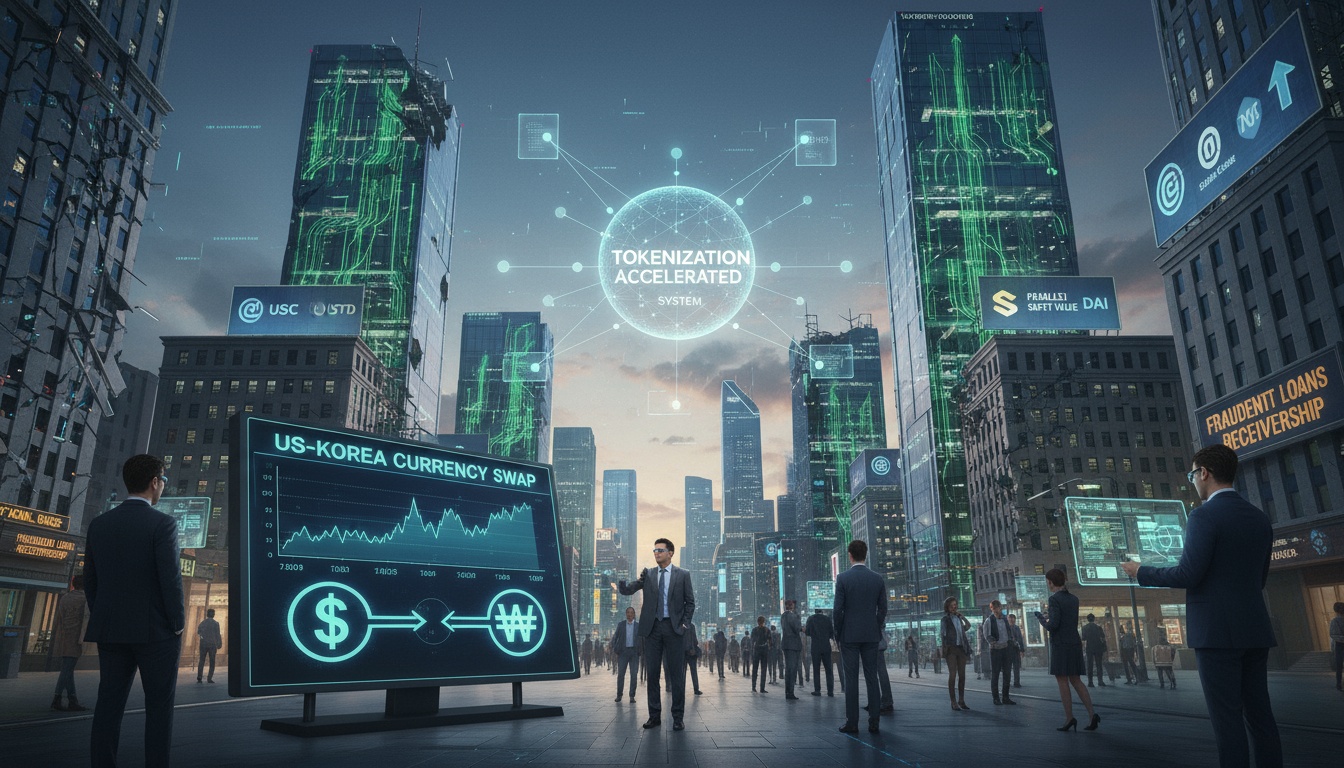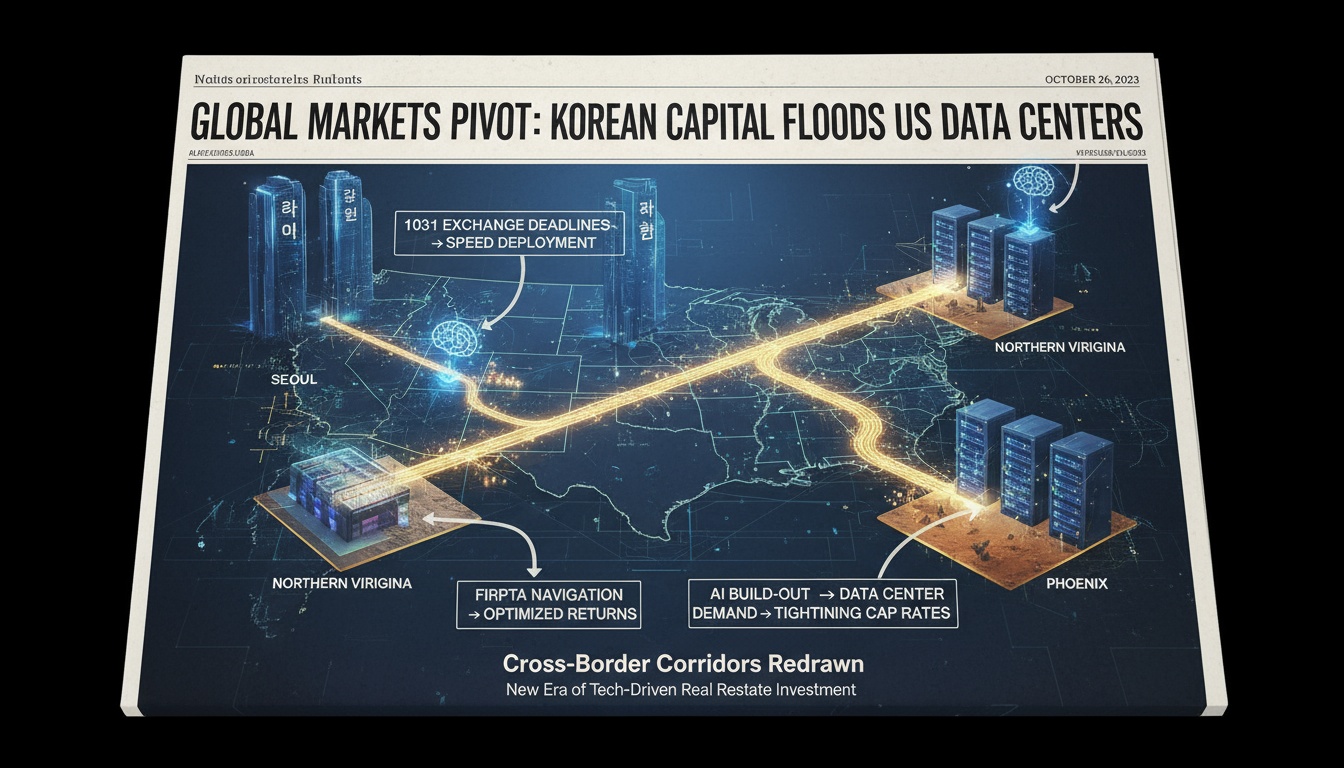● Sovereign AI National Security, Economic Power, Tech Race
National Competitiveness and AI Security: In-Depth Analysis of Sovereign AI Strategy
This article explains how Korea can promote vertical industries such as manufacturing, public services, and security through its own Sovereign AI while the U.S. and China recognize AI as a matter of national security and competitiveness.
In particular, we focus on the remarks of SK Vice President Kim Ji-hyun regarding AI model development methods (from scratch, CPT, distillation), the importance of building an AI full-stack, securing data sovereignty, and Korea’s AI infrastructure investment strategy, alongside economic forecasts and the impact on the Fourth Industrial Revolution.
1. Sovereign AI: Concept and Background
Sovereign AI aims to establish an independent artificial intelligence foundation model to reduce foreign dependence and to create a self-sufficient AI ecosystem for national security.
The U.S. views the AI full-stack as a matter of national security and aims to build a perfect system domestically, while domestic experts focus on fostering vertical industries through derivative models.
This project involves five companies, including Naver Cloud, Upstage, SKT, NC AI, and LG AI Research Institute, which will select the final two firms with the goal of achieving over 95% performance of global AI models.
2. AI Model Development Methods and Technical Strategies
AI model development can be approached in three main ways.
– From Scratch Model: Built independently from the ground up, requiring the most investment in data, talent, and infrastructure.
– CPT (Continuous Pre-Training) Model: A method of rapidly developing models based on open-source tools, although it has limitations in flexibility and performance.
– Distillation Method: A way to lightweight existing models by extracting core elements, leading to faster development but limitations in securing foundational technology.
Korea’s independent model (KLM) aims to proceed with the from scratch model, thus obtaining a high degree of freedom and technological competitiveness in developing derivative models.
3. Importance of AI Full-Stack and Infrastructure
AI services are composed of four layers.
– Data Centers and Infrastructure: Including GPU, memory (HBM), and computing servers to provide the physical foundation for AI operations.
– Cloud-Based Software: Essential AI models (engines) and the environments in which they operate.
– AI Ops: Management and operational systems for AI services to function without limitations.
– End User Channels: Providing services through computers, smartphones, and AI devices.
SK strategically invests across all these layers, strengthening domestic infrastructure to secure competitiveness in global AI technology and security.
4. Data Sovereignty and National Economic Outlook
One of the key elements of AI performance is ‘data.’
Securing and refining high-quality domestic data has a direct impact on AI model training and inference, which connects to national sovereignty.
Korea, based on its long-standing IT strength, has a significant opportunity to develop services reflecting unique data and cultural characteristics, competing effectively in international markets.
This is a core strategy to lead global economic trends and the Fourth Industrial Revolution.
5. Global Competitive Landscape and the Role of Vertical AI
The U.S. is implementing a strategy to fully control the AI full-stack and supply it to its allies while China attempts to penetrate international markets through its own technology and collaboration.
Korea, while developing its own AI model, also promotes customized derivative models (vertical AI) specialized in manufacturing AI and public AI, which are expected to significantly impact the revival of the Korean manufacturing industry and national economic growth.
6. Future Challenges and Strategic Expectations
Pursuing Sovereign AI aims not only at technology development but also at strengthening national security, industrial competitiveness, data sovereignty, and the overall capabilities of the AI industry ecosystem.
By forming consortia among companies for joint research and technology sharing, even in failure, each participating company can accumulate significant experience and technical prowess.
Moreover, through strategic governmental support and increased investment, long-term economic prospects and strengthening influence in the Fourth Industrial Revolution are anticipated.
This strategy, centered on key SEO keywords such as AI technology, economic outlook, global economy, Fourth Industrial Revolution, and AI trends, will play a crucial role in enhancing national competitiveness and securing future growth drivers.
● Sovereign AI aims to build an independent artificial intelligence foundation model to protect national sovereignty.
● AI model development methods are categorized into from scratch, CPT, and distillation methods, with Korea focusing on securing foundational technology.
● Building an AI full-stack requires four layers: data centers, cloud, AI Ops, and user channels.
● Securing data sovereignty and refining unique data are key elements for domestic AI technology competitiveness.
● Unlike the U.S. and China, Korea is expected to contribute to the revival of the manufacturing industry and enhance national economic outlook through vertical AI.
[Related articles…]Global AI Outlook Major Trends | Analysis of Economic Outlook and the Fourth Industrial Revolution
*Source: [ 티타임즈TV ]
– “미국은 AI를 안보로 생각한다. 한국은 제 목소리 내야 한다” (김지현 SK 부사장)
● AI Power Play, Revolutionary Innovation, Unmatched Impact
Focus on Applications, Prospects of Government Sovereign AI Projects and Industrial AI
Main Points of the Article
This news discusses the government’s push for Sovereign AI, specifically the “domestic artificial intelligence foundation model” project, and examines the differences from existing global AI leadership. It delves into economic prospects, the key trends of artificial intelligence in the Fourth Industrial Revolution, and the opinion of expert Jo Yong-min that Korea should concentrate on application development.
Starting with an analogy comparing it to nuclear bomb technology, the article thoroughly addresses the roles of government and private sectors, as well as strategies for building AI models that can be practically utilized in the industrial field, presenting critical insights not covered by other media.
Government Sovereign AI Project and Its Realistic Challenges
Recently, the government has selected five companies, including Naver Cloud, Upstage, SKT, NC AI, and LG AI Research Institute, to embark on developing independent artificial intelligence foundation models.
The goal of this project is to develop models that possess over 95% of the performance of global AI models.
However, Jo Yong-min argues through the analogy that “the technology itself is less frightening than the bomb,” emphasizing the need to focus on real productivity, namely the application and quality of services, rather than core technology.
This discussion is crucial in assessing the economic impact and the direction of AI development in the era of the Fourth Industrial Revolution.
Application vs. Foundation Model – A 95% Difference Felt by Users
Director Jo states, “Users feel a sky-high difference of 95%,” explaining that the perceived efficiency in actual usage environments is more important than the quality of the technology itself.
At the same time, he emphasizes the necessity of creating practical services that solve issues in various fields such as manufacturing, finance, and healthcare by concentrating on industrial AI.
He points out that developing specialized applications and industry-specific solutions unique to Korea can yield greater economic ripple effects compared to competing with global foundation models already established by large AI companies.
The article integrates top SEO keywords like economy, global AI, artificial intelligence, Fourth Industrial Revolution, and AI trends, making it easy for domestic and international readers to grasp the core points at a glance.
Industry Field and Future Strategy – Strengthening Data Sovereignty and Connectivity
Director Jo also highlights the importance of data organization and definition, focusing on enhancing the usability of AI in industrial settings.
He specifically critiques the limitations of foundation models built from global data learning over fluency in Korean data, stressing that developing industry-specific AI and enhancing connectivity between talents and technologies across countries is key to future competitiveness.
Meanwhile, the article analyzes global advanced cases like the U.S. and China, discussing the division of roles between government and private sectors and the economic ripple effects of AI global expansion.
Simultaneously, by exploring the economic opportunities brought about by application innovation and the changes it can cause across industries, it provides readers with a directional insight into practical industrial innovation strategies.
Key Insights – A Special Perspective Not Covered by Other News
Director Jo’s remark that “A country with 20 nuclear bombs would be more frightening” carries a message emphasizing the importance of industrial application and usability beyond mere technological competition.
Particularly, the fact that achieving 95% performance in a foundation model can lead to significant differences in actual user experiences serves as a reminder of how essential the ‘definition’ and ‘practicality’ of technology are.
Additionally, comparing this with foreign cases, the emphasis on strategically connecting government support and talent policies to positively influence the overall economy is noteworthy.
Summary
As the government’s Sovereign AI project competes with global foundation models, Jo Yong-min emphasizes the need to focus on the practicality of applications through his nuclear bomb analogy.
The major themes discussed include the significant difference that 95% technology completeness makes in actual user experiences, the importance of data organization and definition, and the innovation in the economy and Fourth Industrial Revolution through industrial-specific AI development.
A comprehensive consideration of domestic and international AI trends and talent policies, along with economic prospects, highlights the strategic factors that will be critical to determining the future of Korea’s AI industry.
[Related Articles…] Nuclear Bomb Analogy, A Warning Message in the AI Era | Industrial Change Brought by Application Innovation
*Source: [ 티타임즈TV ]
– “핵폭탄 기술보다 핵폭탄이 더 무섭다. 애플리케이션에 집중해야” (조용민 언바운드랩스 대표)
● Shocking Economic Shift
Complete Guide to AI Image and Video Creation: Current Status of Global Economy and Innovative AI Trends
AI Image and Video Creation Trends and Key Technologies
Recently, technologies utilizing AI to generate images and videos have made remarkable advancements.
Tools such as Nanobana, VEO3, Midjourney, Google Gemini, and Google Flow have emerged, enabling creative storytelling.
This article will naturally incorporate top SEO keywords like economy, global, innovation, fourth industrial revolution, and AI, detailing the latest trends and practical applications.
Through this text, readers can grasp the core aspects of AI trends at a glance.
Practical Guide to Video Production Using Nanobana and VEO3
Nanobana and VEO3 are tools optimized for storytelling while maintaining consistency in AI-based image and video creation.
First, we introduce how to create characters and scenes using Midjourney via text prompts.
Then, we will guide you step-by-step to select and modify the generated images using Nanobana, and connect them into a coherent video.
In particular, the core point is the process of attempting video transitions through the Animate feature beyond simple image generation.
This way, users will understand how to produce music video-style clips that seamlessly connect.
Integrating Various AI Tools with Artlist
Artlist is an all-in-one platform providing AI-based tools and premium creative assets for modern filmmakers and creators.
This platform includes features such as text-to-image and text-to-video generation, voiceovers, sound effects, LUTs, and templates.
By perfectly integrating with major editing software like Premiere Pro, After Effects, DaVinci Resolve, it maximizes work efficiency.
Moreover, utilizing the credit system of Google Flow allows for consistent video generation per project, which is attracting attention as an innovative video production method in the era of global economy and the fourth industrial revolution.
Economy and the Fourth Industrial Revolution: The Global Volatility That AI Innovation Will Bring
AI-based creative technologies forecast significant changes not only in video production but across the economy.
The advancements in image and video generation technology are reshaping the content creation industry, providing new momentum for global market competitiveness and economic growth.
In particular, the combination of AI and the fourth industrial revolution is expected to change the landscape of business environments and the digital economy through innovative approaches.
Thus, the utilization of AI trends and new creative tools will have a positive impact on the global economy beyond mere technological innovation.
Future Prospects and How to Utilize It as Your Own Weapon
As AI technology advances, an era has arrived where anyone can create creative content.
It’s important to experiment and master various AI tools to realize your ideas.
Consistently practicing prompt work, maintaining image consistency, and utilizing video animations is essential.
Such experiences will not only strengthen one’s creative capabilities but also can evolve into powerful weapons that can be developed into innovative business ideas.
In the flow of future industries characterized by keywords like economy, global, innovation, fourth industrial revolution, and AI, it is time to continuously upgrade your skills.
[Related Articles…]
Latest AI Video Production Tips
Global Economy and AI Innovation
*Source: [ AI 겸임교수 이종범 ]
– AI 이미지·영상 생성 완벽 가이드 | 나노 바나나·VEO3 실전 활용법


